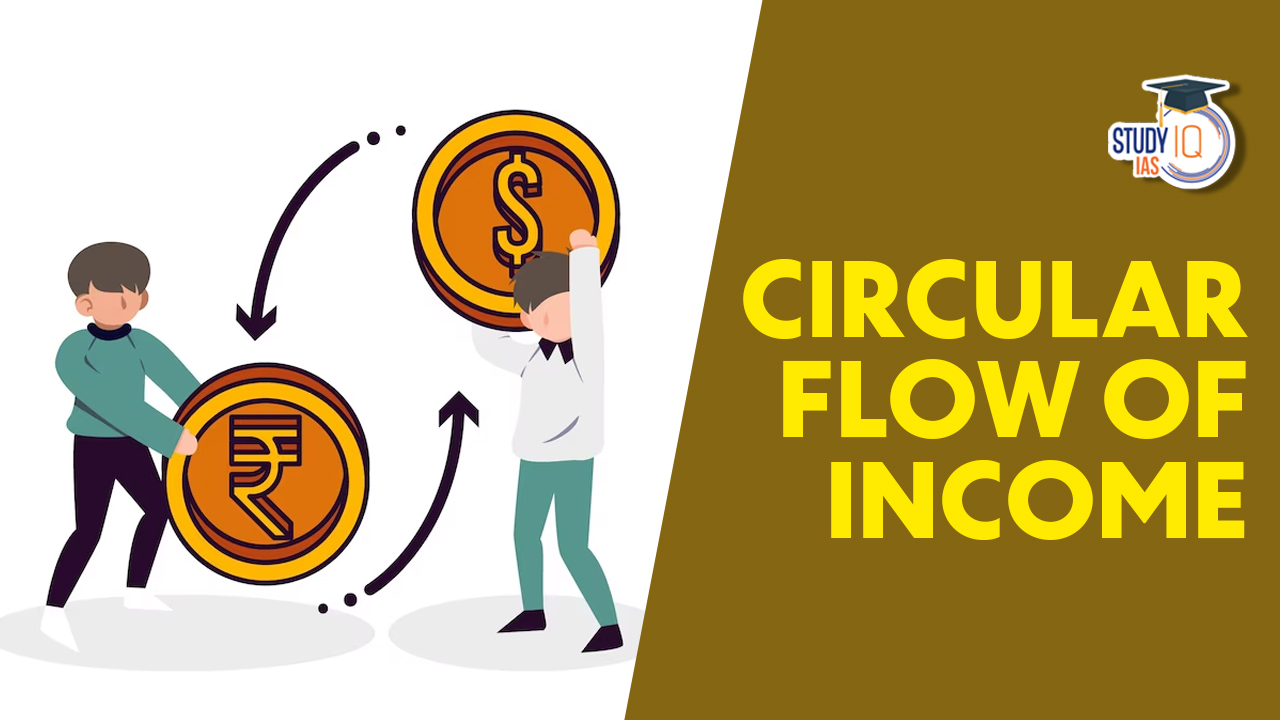Table of Contents
Circular Flow of Income
In the vast interconnected web of economic transactions, the Circular Flow of Income serves as the lifeblood that propels economies forward. This fundamental concept captures the dynamic flow of money, resources, and goods between households, businesses, and the government, forming the foundation of economic activity.
The Circular Flow of Income illustrates how individuals, as consumers, receive income from their participation in the production process, which they, in turn, spend on goods and services produced by businesses. Meanwhile, businesses generate revenue, create employment opportunities, and contribute to government revenue through taxes. This intricate interplay between economic agents creates a continuous cycle of income and spending, fueling economic growth and prosperity.
Read about: Gross National Product
Types of Circular Flow of Income
The Circular Flow of Income can be categorized into two types based on the flow of factors and money:
Real Flow
The real flow represents the physical movement of factor services and goods and services between households and firms. It involves the flow of factor services from households to firms, such as labour, capital, and land, which are utilized in the production process. In return, firms produce goods and services that are exchanged with households for consumption.
Money Flow
The money flow refers to the flow of payments or money exchanged between households and firms. It involves the flow of factor payments from firms to households in the form of wages, salaries, rent, and profits for the factor services provided. On the other hand, households use their income to purchase goods and services from firms, generating revenue for the firms.
These two types of circular flows, the real flow and the money flow, depict the interconnectedness and continuous exchange of factor services, goods, and payments between households and firms. They illustrate how income is generated, distributed, and spent within an economy, forming the foundation of economic activity.
Read about: Gross Domestic Product
Circular Flow of Income Phases
The circular flow of income can be divided into three phases: generation, distribution, and disposition. Let’s explore each phase:
Generation Phase
In the generation phase, the production of goods and services takes place. Businesses combine various inputs, such as labour, capital, and resources, to produce goods and services. This phase involves the creation of value through the production process, contributing to the overall output of the economy.
Distribution Phase
Once the goods and services are produced, they are distributed among different economic agents. In the distribution phase, factors of production, including wages, rent, interest, and profits, are allocated to households as income. This phase involves the division of the generated income among individuals and groups based on their participation in the production process.
Disposition Phase
The disposition phase deals with how households allocate their income for consumption, saving, and taxation. In this phase, households make decisions on how much of their income to spend on goods and services for consumption purposes. They also determine the portion of their income to save for future use or invest in financial assets. Additionally, the government collects taxes from households to finance public expenditures and implement fiscal policies.
These three phases of the circular flow of income—generation, distribution, and disposition—capture the key stages in the continuous cycle of economic activity. They highlight the processes of production, income generation, distribution of income, and the choices made by households regarding consumption, saving, and taxation.
Read about: External Debt of India
Circular Flow of Income Significance
The significance of the circular flow of income can be summarized as follows:
- Interdependence: It shows the interconnectedness of households, businesses, and the government, guiding policy decisions and promoting economic stability.
- Economic Stability: It helps assess and address imbalances in income, expenditure, and production for maintaining a stable economy.
- Income Distribution: It highlights the distribution of income, aiding in addressing inequality and implementing policies for fairer distribution.
- Economic Growth: It identifies drivers of growth, such as investment, consumption, and government expenditure, facilitating strategies for sustainable development.
- Policy Formulation: It guides policymakers in analyzing the impact of policies on different sectors and making informed decisions for economic management.
Read about: Concept of GDP, GNP, NNP and NDP
Circular Flow of Income UPSC
Understanding the circular flow of income is crucial for UPSC aspirants as it is a topic included in the UPSC Syllabus, particularly in the Economics and Indian Economy sections. Mastery of this concept is essential for comprehending the functioning of an economy, income distribution, and policy formulation. Aspirants can learn these concepts from UPSC Online Coaching and practicing it through UPSC Mock Test to strengthen their understanding of economic systems, develop analytical skills, and effectively answer questions related to economic policies, growth, and income distribution in the UPSC examinations.
Read about: NRI Deposits


 Goods and Services Tax (GST), Objectives...
Goods and Services Tax (GST), Objectives...
 World Oceans Day 2025, History, Theme, S...
World Oceans Day 2025, History, Theme, S...
 World Environment Day 2025, Theme, Histo...
World Environment Day 2025, Theme, Histo...





















